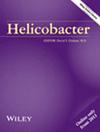Impact of an Electronic Medical Record Quality Improvement Intervention on Helicobacter pylori Treatment and Eradication Rates in a U.S. Hospital System
Abstract
Background
In this pre- and post-intervention quality improvement (QI) study, the impact of an electronic medical record (EMR) order set for Helicobacter pylori treatment was assessed. We evaluated changes in optimal treatment regimen usage, eradication testing, and successful eradication rates based on the intervention.
Materials and Methods
Data were collected from patients within the Harris Health System (Houston, TX) with H. pylori infection. The pre-intervention cohort included patients with a positive H. pylori test from January to February 2022. An EMR order set for H. pylori treatment implemented in May 2022 included optimal treatment recommendations using local antibiotic resistance patterns and testing for eradication post-treatment. Comparisons of proportions with optimal treatment and eradication rates between the pre-intervention cohort, an early post-intervention group (June–July 2022), and a late post-intervention group (November–December 2022) were evaluated using chi-square tests.
Results
We identified 295 patients in the pre-intervention, 414 patients in the early post-intervention, and 320 patients in the late post-intervention cohorts. There was an increase in proportions of optimal treatment (bismuth-quadruple, clarithromycin-quadruple, or rifabutin-triple therapy with a proton pump inhibitor for 14 days) between the pre- and early post-intervention groups from 26.4% to 39.7% (p < 0.01) with a further increase in the late post-intervention group to 85.3% (p < 0.01). The proportion of post-treatment eradication testing within 24 months increased from 56% in the pre-intervention cohort to 65.8% in the early post-intervention cohort (p = 0.01) and 64.9% in the late post-intervention cohort (p = 0.03). In patients with post-treatment eradication testing, there was an increase in successful eradication from 80.6% in the pre-intervention cohort to 88.9% in the early post-intervention cohort (p = 0.03) and 82.6% in the late post-intervention cohort (p = 0.66).
Conclusions
An EMR order set for H. pylori treatment and eradication testing significantly increased rates of using optimal, evidence-based treatment, post-treatment eradication testing, and confirmed eradication of H. pylori infection.

 求助内容:
求助内容: 应助结果提醒方式:
应助结果提醒方式:


